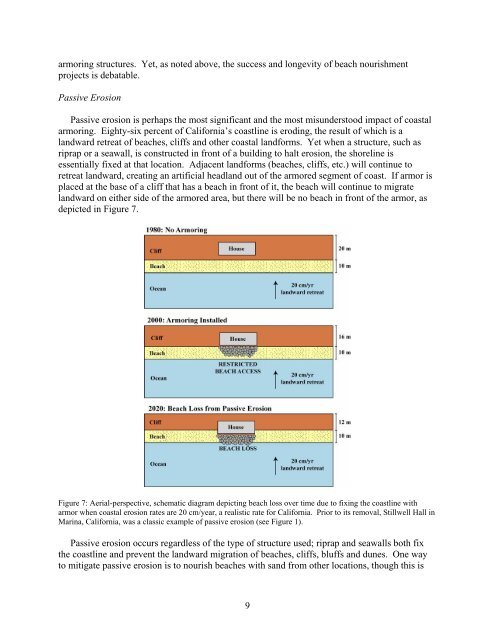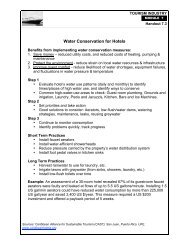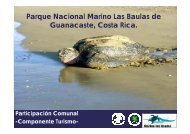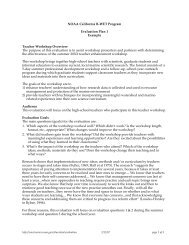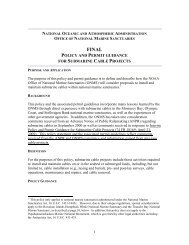The Impacts of Coastal Protection Structures in California's Monterey ...
The Impacts of Coastal Protection Structures in California's Monterey ...
The Impacts of Coastal Protection Structures in California's Monterey ...
- No tags were found...
Create successful ePaper yourself
Turn your PDF publications into a flip-book with our unique Google optimized e-Paper software.
armor<strong>in</strong>g structures. Yet, as noted above, the success and longevity <strong>of</strong> beach nourishmentprojects is debatable.Passive ErosionPassive erosion is perhaps the most significant and the most misunderstood impact <strong>of</strong> coastalarmor<strong>in</strong>g. Eighty-six percent <strong>of</strong> California’s coastl<strong>in</strong>e is erod<strong>in</strong>g, the result <strong>of</strong> which is alandward retreat <strong>of</strong> beaches, cliffs and other coastal landforms. Yet when a structure, such asriprap or a seawall, is constructed <strong>in</strong> front <strong>of</strong> a build<strong>in</strong>g to halt erosion, the shorel<strong>in</strong>e isessentially fixed at that location. Adjacent landforms (beaches, cliffs, etc.) will cont<strong>in</strong>ue toretreat landward, creat<strong>in</strong>g an artificial headland out <strong>of</strong> the armored segment <strong>of</strong> coast. If armor isplaced at the base <strong>of</strong> a cliff that has a beach <strong>in</strong> front <strong>of</strong> it, the beach will cont<strong>in</strong>ue to migratelandward on either side <strong>of</strong> the armored area, but there will be no beach <strong>in</strong> front <strong>of</strong> the armor, asdepicted <strong>in</strong> Figure 7.Figure 7: Aerial-perspective, schematic diagram depict<strong>in</strong>g beach loss over time due to fix<strong>in</strong>g the coastl<strong>in</strong>e witharmor when coastal erosion rates are 20 cm/year, a realistic rate for California. Prior to its removal, Stillwell Hall <strong>in</strong>Mar<strong>in</strong>a, California, was a classic example <strong>of</strong> passive erosion (see Figure 1).Passive erosion occurs regardless <strong>of</strong> the type <strong>of</strong> structure used; riprap and seawalls both fixthe coastl<strong>in</strong>e and prevent the landward migration <strong>of</strong> beaches, cliffs, bluffs and dunes. One wayto mitigate passive erosion is to nourish beaches with sand from other locations, though this is9


